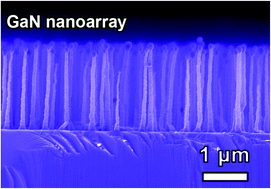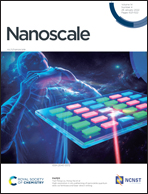Homogeneous and well-aligned GaN nanowire arrays via a modified HVPE process and their cathodoluminescence properties†
Abstract
In this work, we demonstrate the growth of homogeneous and well-aligned [0001]-oriented 1-D GaN nanoarrays via a modified hydride vapor phase epitaxy (HVPE) process using GaCl3 and NH3 as precursors. The density and length of the grown nanowires can be easily controlled by the process parameters. It was found that the growth technique provides Cl-rich growth conditions, which lead to special morphology and optical properties of the GaN nanoarrays. Different from reported GaN nanowires, the as-synthesized GaN nanoarrays in this study exhibit a hollow bamboo-like structure. Also, the cathodoluminescence spectrum shows strong visible luminescence between 400 and 600 nm wavelengths centered at 450 nm, and the disappearance of an intrinsic emission peak, which has been investigated in detail with the assistance of first-principles calculations. The strategy proposed in this work will pave a solid way for the controlled nucleation and growth of well-aligned GaN nanowire arrays which are significant for applications in large-scale integrated optoelectronic nanodevices, functionalized sensors and photoelectrocatalysis.



 Please wait while we load your content...
Please wait while we load your content...